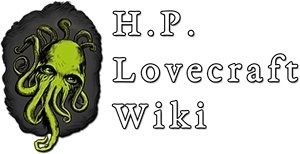![]() Kenneth Grant (23 May 1924 – 15 January 2011) was an English ceremonial magician and prominent advocate of the Thelemite religion. A poet, novelist, and writer, he founded his own Thelemite organisation, the Typhonian Ordo Templi Orientis later renamed the Typhonian Order with his wife Steffi Grant.
Kenneth Grant (23 May 1924 – 15 January 2011) was an English ceremonial magician and prominent advocate of the Thelemite religion. A poet, novelist, and writer, he founded his own Thelemite organisation, the Typhonian Ordo Templi Orientis later renamed the Typhonian Order with his wife Steffi Grant.
Born in Ilford]], Essex, Grant developed an interest in occultism and Asian religion during his teenage years. After several months serving in India with the British Army amid the Second World War, he returned to Britain and became the personal secretary of Aleister Crowley, the ceremonial magician who had founded Thelema in 1904. Crowley instructed Grant in his esotericpractices, initiating him into his own occult order, the Ordo Templi Orientis (O.T.O.). When Crowley died in 1947, Grant was seen as his heir apparent in Britain, and was appointed as such by the American head of the O.T.O., Karl Germer. Founding the London based New Isis Lodge in 1954, Grant added to many of Crowley's Thelemite teachings, bringing in extraterrestrial themes and influences from the work of H.P. Lovecraft. This was anathema to Germer, who expelled Grant from the O.T.O. in 1955, although the latter continued to operate his Lodge regardless until 1962.
In 1949, Grant befriended the occult artist Austin Osman Spare, and in ensuing years helped to publicise Spare's artwork through a series of publications. During the 1950s he also came to be increasingly interested in Hinduism, exploring the teachings of the Hindu guru Ramana Maharshi and publishing a range of articles on the topic. He was particularly interested in the Hindu tantra, incorporating ideas from it into the Thelemic practices of sex magic. On Germer's death in 1969, Grant proclaimed himself Outer Head of the O.T.O.; this title was disputed by the American Grady McMurtry, who took control of the O.T.O. Grant's Order became known as the Typhonian Ordo Templi Orientis, operating from his Golders Green home. In 1959 he began publishing on the subject of occultism, and proceeded to author the Typhonian Trilogies, as well as a number of novels, books of poetry, and publications devoted to propagating the work of Crowley and Spare.
Grant's writings and teachings have proved a significant influence over other currents of occultism, including chaos magic, the Temple of Set and the Dragon Rouge. They also attracted academic interest within the study of Western esotericism, particularly from Henrik Bogdan and Dave Evans.
Grant was one of the first to study Machen, Innes, Blackwood and especially Lovecraft, which he refers to the Necronomicon Mythos, and see some correlations with Aleister Crowley's work:[1]
| Lovecraft | Crowley | |
|---|---|---|
| Al Azif - The Book of the Arab (This book is frequently referred to as all powerful in a magical sense.) | Al vel Legis-The Book of the Law. (This book is claimed by A. C. to contain the supreme spells. See Magick, p.107). | |
| The Great Old Ones. (This expression occurs in the Cthulhu Cult Stories.) | The Great Ones of the Night of Time. (A phrase which occurs repeatedly in the Rituals of the Golden Dawn. | |
| Yog-Sothoth (A barbarous name to evoke utmost evil). | Sut-Thoth, Sut-Typhon. (A.C. identified his Holy Guardian Angel with Set, considered an abhorrent deity: "Called evil to conceal his holiness".) | |
| Gnoph-Hek. (The hairy thing)(Obviously phallic). | Coph-Nia. (A barbarous name in AL, Probably associate with a phallic concept). | |
| The Cold Waste (Kadath) | The Wanderer of the Waste (Hadith). A title adopted by A.C. | |
| Nyarlahotep (a god accompanied by "idiot flute players"). | "Into my loneliness comes the sound of a flute." (A.C. in Liber VII.) | |
| Shub-Niggurath: The Goat with a Thousand Young | "I am the hideous God..." Ceptus, the Hideous God, blend of dog and bear (Sut-Typhon). (A.C. in The Book of the Spirit of the Goat.) | |
| The overpowering stench associated with Nyarlathotep. | The perfume of Pan pervading..." (A.C. in Liber VII.) | |
| Great Chthulhu dead, but dreaming in R'lyeh. | The Primal Sleep, in which the Great Ones of the Night of Time are immersed. Cf "Pan is not dead, he liveth, Pan!" | |
| Azathoth (the blind and idiot chaos at the center of infinity). | Cf Azoth, the alchemical solvent; Thoth, Mercury: Chaos is Hadit at the centre of Infinity (Nuit). | |
| The Faceless One (The God Nyarlathotep). | The Headless One (or the Bornless One, as A.C. called his favorite magical invocation). | |
| The five pointed star carven of grey stone. | Nuit's Star: The five-pointed star with the circle in the middle. (Grey is the color of Saturn, the Great Mother of which Nuit is a form.) | |
| Finally, the following passage from The Lurker at the Threshold could be interpreted in terms of the iridescent globes in the circle containing the green pentagram at the base of Crowley's Pantacle:
"Not stars, but suns, great globes of light...and not these alone, but the breaking apart of the nearest globes, and the protoplasmic flesh that flamed blackly outward to join together and form that eldritch, hideous horror from outer space that spawn of the blackness of primal time, that tentacled amorphous monster which was the lurker at the threshold, whose mask was as a congeries of iridescent globes, the noxious Yog-Sothoth who froths as the primal slime in nuclear chaos beyond the nether-most outposts of space and time!" | ||
Sources
- ↑ The Magical Revival
